On November 12, 2025, HLI PIs Drs. Pat Camp and Graeme Koelwyn and Science and Grant Writers Drs. Kasia Adolphs and Evan Phillips participated in a Providence Research Trainee Collaborative Grant Writing Workshop.
During the session, moderated by PR Research Director Dr. Scott Tebbutt, panelists shared key strategies for writing fellowship and grant applications. Topics included the use of storytelling in grant writing, how best to align an application with funder priorities, balancing authenticity and strategic positioning, common pitfalls to avoid, handling rejection and re-submission, mentoring and leadership – and more.
Key Takeaways
✅ Tailor every application to the funder’s priorities and evaluation criteria.
✅ Use storytelling strategically to connect past experiences with future goals.
✅ Plan timelines early – avoid last-minute submissions.
✅ Engage authentically with EDI principles and community relationships.
✅ Seek feedback and mentorship to strengthen your application.
This event was part of a series of events organized by the Providence Research Trainee Collaborative to support trainees in successfully navigating their career paths. Following the panel discussion, trainees were encouraged to join a networking session, which provided the opportunity to explore and discuss topics further.
A big thank you to Kaylie Friess (Project Manager) and Josephine Jung (Director, Special Projects and Strategy) from Providence Research for organizing the event!
Story by Basak Ashley Sahin. Edited by Tiffany Chang.

When Asma Tanveer moved to Canada from Pakistan 10 years ago, she brought with her a master’s degree in biotechnology and a passion for scientific research and its impact. Like many newcomers, she faced significant challenges in navigating credential recognition, an unfamiliar academic system, and the absence of accessible professional networks.
Asma is one of many trainees at HLI with a unique background and perspective. In June 2025, she was named HLI’s Equity, Diversity, and Inclusion (EDI) Person of the Quarter in recognition of her leadership, mentorship, and efforts to foster a more inclusive environment.
At HLI, Asma works on airway epithelial repair and drug responses in asthma models as a master’s student in the Dorscheid Lab in UBC’s Experimental Medicine program. She also contributes to outreach and mentorship through initiatives such as Geneskool: a Genome BC program that introduces high school students to genomics and biomedical research.
From personal experience to advocacy
Asma’s commitment to EDI is shaped by lived experience. “My commitment to EDI began with the realization that too many talented individuals are overlooked – not for lack of ability, but because of who they are. Having felt that invisibility myself, I was driven to act,” she says.
Since then, she has mentored women in science, contributed to outreach through Geneskool, and advocated for inclusion grounded in empathy and shared experience. “For me, EDI isn’t optional. It’s a responsibility to ensure everyone feels they belong.”
Her journey into biomedical research was shaped by mentors who offered support at key moments. She first connected with Dr. Sima Allahverdian, a former HLI researcher, through a mutual friend. Though Dr. Allahverdian had already relocated to Toronto, she generously offered guidance – recommending courses and encouraging Asma to pursue volunteer experience.
That connection led to an introduction to Dr. Gurpreet Singhera, a research associate at HLI and a manager of the Bruce McManus Cardiovascular Biobank. “Even with her full schedule, Dr. Singhera always made time for answering my emails or meeting for a coffee chat,” she says. “She helped me strengthen my application, introduced me to Dr. Del Dorscheid, and believed in my potential to contribute meaningfully to the lab.”
With their support, she joined the Dorscheid Lab as a graduate student. Looking back, she credits both mentors not only for their guidance but for modelling what inclusive mentorship looks like in practice. “Their belief in me made a lasting impact. It’s part of why I now feel so strongly about creating that same sense of welcome for others.”
Leading by example
Asma’s advocacy now includes mentoring early-career researchers, promoting inclusive lab practices, and contributing to outreach that reflects the diversity of communities served by HLI.
“EDI has shaped not just how I work, but why I work,” she says.“It’s helped me find mentors who value potential over credentials and communities that see difference as a strength. “
She believes inclusion begins with how people are welcomed and supported. “Sometimes, what holds people back isn’t a lack of talent, but a lack of confidence or the right platform to express themselves,” she says. “When we support others with respect and openness, we create the kind of environment where people feel seen – and when they feel seen, they shine. When they shine, we all benefit.”
That perspective was reinforced during a Mentor Walk session hosted by Tech2Step, where she was invited to speak on a science outreach panel. As the only racialized woman present – visibly Muslim, hijab-wearing, and of Pakistani and South Asian background – Asma says the moment reminded her that she was representing more than just herself.
“After the session, several attendees, especially young women, told me how much it meant to see someone who looked like them in that space. I realized I was part of something larger, a reflection of what’s possible.”
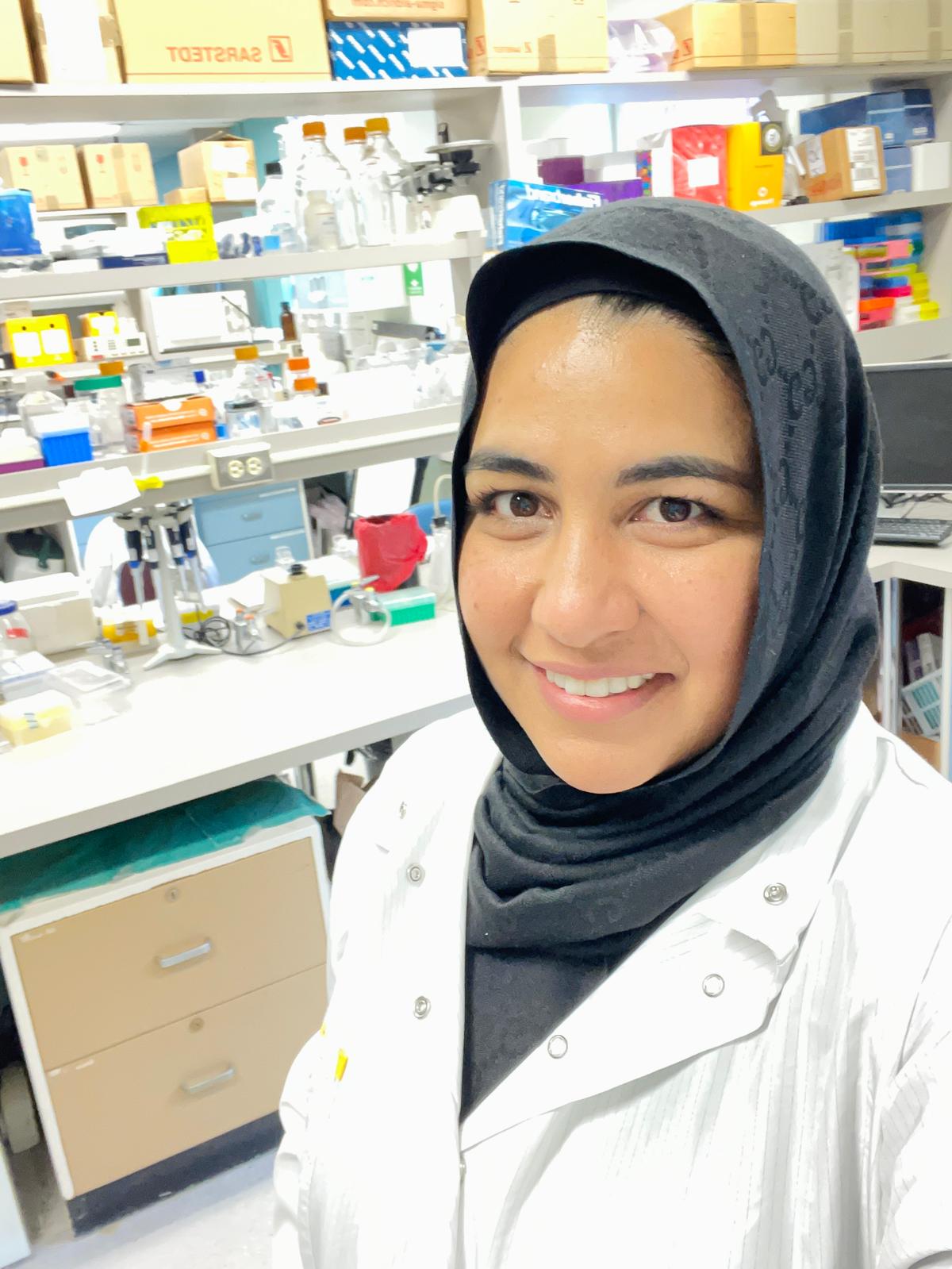
Creating space for others to thrive
Asma encourages others to take action, regardless of role or title.
“Start where you are. Improving EDI doesn’t require a title – small, consistent actions can create meaningful change. Your intention matters. The way you speak, listen, and show up shapes how others feel.”
She shares that there are many ways to contribute. She regularly offers coffee chats, connects friends and peers with professional opportunities, and volunteers as a parent at her children’s Catholic school and church events. She also leads an Islamic teaching circle in Vancouver – a space for reflection, learning and community building.
“In all spaces, I try to be of service in ways that honour others’ values and experiences – just as I hope mine are respected,” she says. “And I encourage others to do the same.”
Outside of the lab
Outside of her research and outreach work, Asma enjoys spending time with her husband and two daughters. They often play badminton together or unwind over a meal at The Old Spaghetti Factory, a family favourite in Vancouver.
“My family is my greatest source of strength and motivation,” she says.
Through her work, mentorship and advocacy, Asma Tanveer continues to advance both scientific inquiry and a culture of belonging, demonstrating that research and equity go hand in hand.
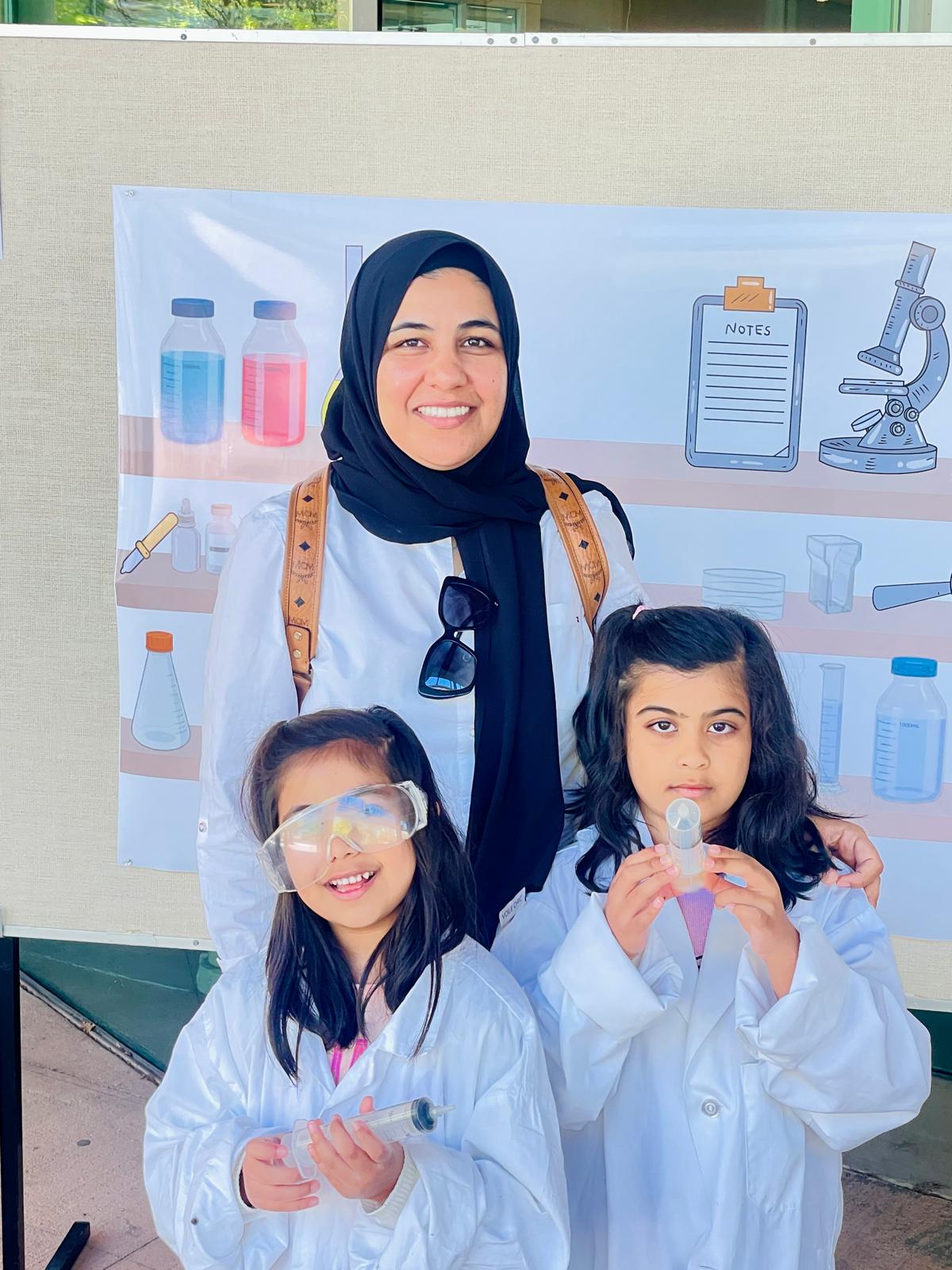
Job Description:
A Research Associate (RA) position is available at the University of British Columbia (UBC), Division of Respiratory Medicine, Department of Medicine under the direction of Dr. Scott J. Tebbutt, Professor of Medicine of UBC Faculty of Medicine and Principal Investigator and Director of Education of Centre for Heart Lung Innovation at St Paul’s Hospital.
The RA will work with an interdisciplinary and international team to support the Immunophenotyping of a COVID-19 pneumonia Cohort (IMPACC) Study. The RA and Dr. Tebbutt’s team members will identify molecular endotypes of long-COVID-19 (also called Post COVID-19 Syndrome) during and after COVID-19 infection, in peripheral blood, plasma, nasal swabs, and airway tissue samples, by carrying out unsupervised analysis of multi-omics profiles at a single time-point or considering the time-course profile during infection. Dr. Tebbutt’s team aims to characterize the molecular heterogeneity during COVID-19 infection and to develop biomarkers of prognostic significance as they relate to the development of long-COVID-19. The distinct molecular patterns associated with each endotype may, in turn, help elucidate novel mechanisms of action and inform drug discovery and repurposing efforts.
The RA will play a critical role in the project team, providing scientific and pulmonology-based expertise to support hypothesis generation, planning, coordination, and identification of host molecular endotypes associated with diverse COVID-19 outcomes and new variants in a longitudinal multi-omics cohort study of 1000 patients. The RA will be responsible for several domains, including, but not limited to: project coordination, critical evaluation of clinical data, applications for funding, communication with collaborators and stakeholders, The RA will provide additional support to the Principal Investigator and collaborators as needed. The COVID-19 pandemic has created a climate of rapidly evolving information, goals and questions, and the RA will be expected to respond quickly and adapt to changing demands and short timelines.
Responsibilities will include, but will not be limited to:
- Performing critical evaluation of clinical data
- Analysis of experimental data, statistical analyses (including omics), preparation of manuscripts and scientific reports, and dissemination of research findings.
- Being current on emerging COVID-19 interventions and models of care, including in the respiratory space
- Performing literature and systematic reviews relevant to above-noted goals
- Facilitating the development of scope and strategies for research registries
- Developing reports and manuscripts for publication
- Preparing and delivering presentations for research meetings
- Coordinating and developing grant applications
- Preparing background documents for stakeholder meetings
- Participating in stakeholder engagement meetings
- Coordinating research activities and chairing and co-chairing research team meetings
- Providing other support as required to Dr. Tebbutt, researchers and team
Requirements:
- MD and MSc degree with 3+ years of relevant postdoctoral experience in respiratory medicine or thoracic research
- A minimum of 5 years of clinical work experience in respiratory/thoracic medicine
- Extensive experience and knowledge of metabolomics, acute lung injury, and preclinical drug development
- Extensive research experience of COVID-19 studies
- Demonstrated high-quality publication record in COVID-19 research: i.e., multiple first-author publications about COVID-19 in high-impact journals such as NEJM, Lancet, Lancet Respir Med, JAMA, JAMA Intern Med, BMJ, AJRCCM, PNAS, etc.
- Experience in studying biomarkers for diagnosing complex diseases of the lungs
- Demonstrated a successful track record of grant (e.g., CIHR) applications (as a co-applicant or applicant)
- Demonstrated experience in managing multiple projects with conflicting timelines and priorities, and excellent time-management skills
Duration and salary:
The position will begin March 1, 2026 for a period of 1 year with the possibility of extension.
Salary is $76,128.00 per annum plus benefits.
Application:
The deadline for interested individuals is December 10, 2025. Applicants should send a cover letter and curriculum vitae to Dr. Tebbutt: scott.tebbutt@hli.ubc.ca
Equity and diversity are essential to academic excellence. An open and diverse community fosters the inclusion of voices that have been underrepresented or discouraged. We encourage applications from members of groups that have been marginalized on any grounds enumerated under the B.C. Human Rights Code, including sex, sexual orientation, gender identity or expression, racialization, disability, political belief, religion, marital or family status, age, and/or status as a First Nation, Metis, Inuit, or Indigenous person.
All qualified candidates are encouraged to apply; however, Canadians and permanent residents will be given priority.
If someone had told me back in my university days in India that I would one day be working with human hearts and lungs, I would have laughed in disbelief. Back then, the world of cardiopulmonary research seemed galaxies away from the microbiology degree I was pursuing.
Life, however, has a way of surprising us. In the summer of 1996, I immigrated to Canada, armed with a PhD in Microbiology, a daunting leap into a new country and a new future. In January 1997, I began my research career at the University of British Columbia in the Department of Microbiology. Those early years were a mix of learning and transition, marked by both professional growth and personal milestones, including a period of maternity leave that reshaped my perspective on work-life balance and resilience.
In August 2000, I joined what was then the McDonald Research Laboratories, today known as the Centre for Heart Lung Innovation (HLI). Walking into the Centre for the first time, I remember feeling both nervous and hopeful. What I didn’t know then was that this place would become my second home in Canada, a space where my professional identity would take root and flourish.
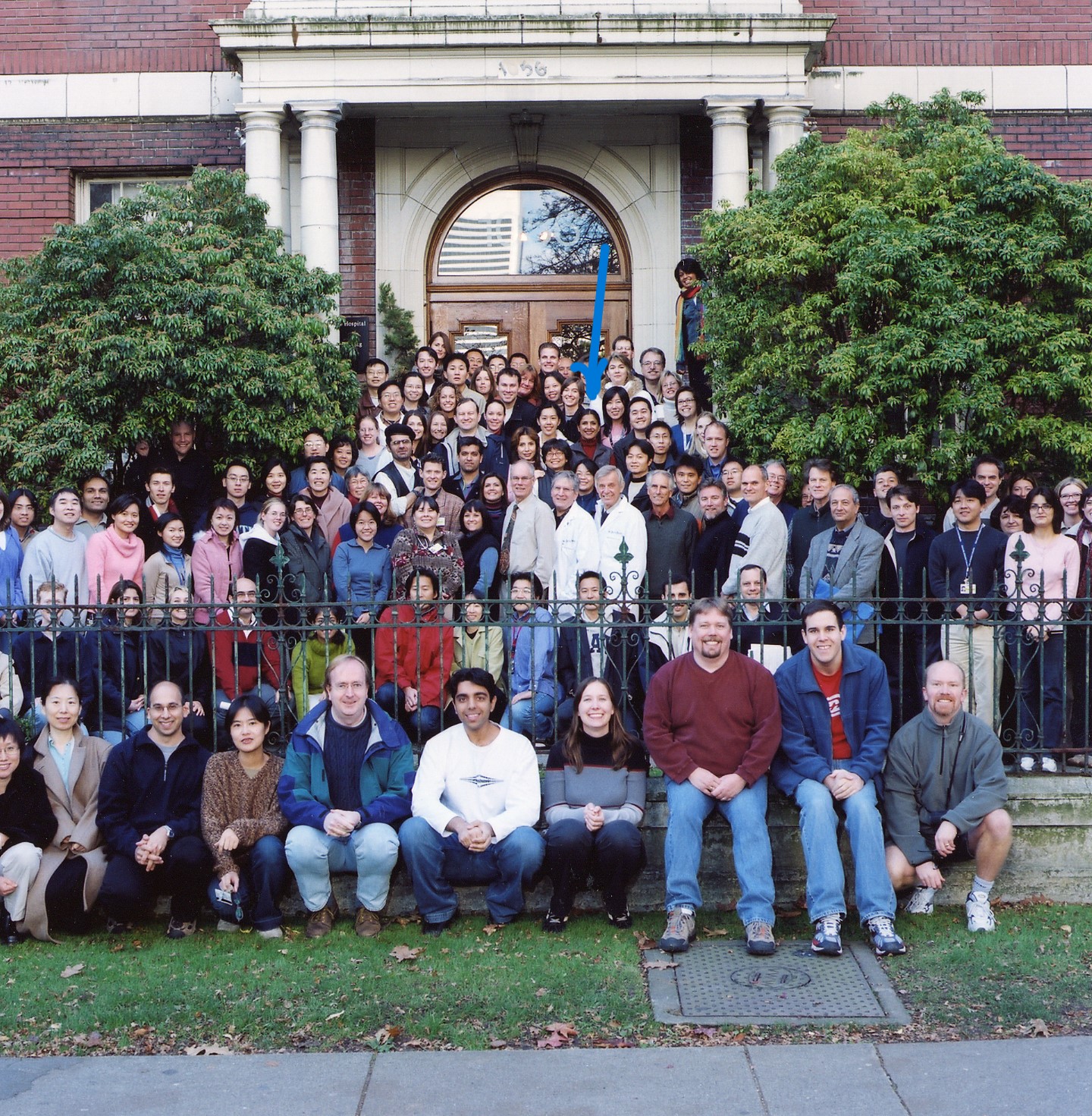
My journey at HLI began in pulmonary research under the mentorship of Dr. Del Dorscheid, who placed his trust in me as a Research Associate and his lab manager. I took on both independent projects and collaborative research initiatives. His faith in me taught an enduring lesson: growth often begins when someone believes in you before you fully believe in yourself.
In academia, research careers depend on funding cycles, shifting priorities, and constant change. With that understanding, I sought to broaden my expertise and prepare for new directions. I had always been fascinated by the work being done in the Cardiovascular Tissue Registry (CVTR) at HLI now known as the Bruce McManus Cardiovascular Biobank (BMCB). When the opportunity arose, I became a member of the explanted heart retrieval team. Today, as the manager of the BMCB, I am not only part of the exciting advancements in the cardiovascular field, but I also witness the human side of science every day. When heart transplant recipients visit the biobank to see the heart that once sustained them, their stories of gratitude and resilience remind me that research isn’t only about experiments or data, it is about people and their wellness.
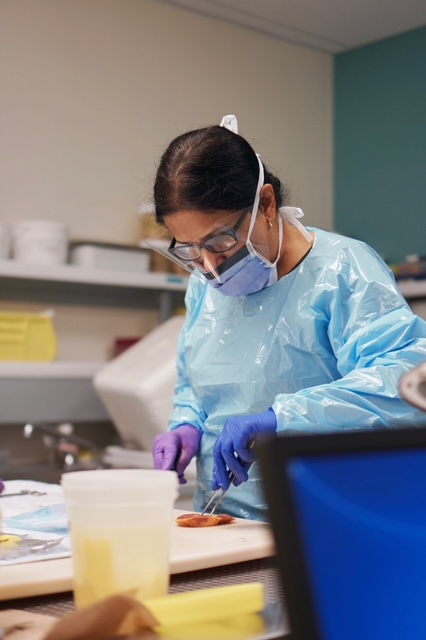
Beyond research, I have always believed in the importance of mentorship and giving back. Since 2008, I have helped organize HLI’s High School Student Week Mentorship Program, which introduces Grade 11 and 12 students into biomedical research. Over the years, I have had the privilege of mentoring more than 250 students. Watching them discover their passion and pursue their careers has been one of the most rewarding parts of my journey.

Soon, HLI will transition from its historic downtown Vancouver location to the Clinical Support and Research Centre (CSRC) at the new St. Paul’s Hospital. It will be a shift from a historic location to one that is futuristic, and I am excited and grateful to be part of this transition. Still, the walls of our current home hold memories that will always stay with me.
In August 2025, I celebrated twenty-five years at HLI, a milestone that fills me with immense gratitude. Looking back over these two and a half decades, I am thankful for the mentors who guided me, and for the colleagues who became lifelong friends. Leaving my family and friends in India was one of the hardest choices I ever made, but the community I found at HLI filled that space with belonging and purpose.
HLI has taught me far more than science. It has helped foster my development as a leader, strengthened my resilience, and deepened my gratitude. It has shown me that growth does not happen in isolation, it happens in communities that believe in one another. For me, that community has always been HLI, and for that, I am deeply thankful.
Congratulations to Dr. Gordon Francis, on receiving the Beedie Family Professorship in Cardiovascular Disease Prevention!
Dr. Francis studies the role of cholesterol metabolism in the development, treatment and prevention of atherosclerosis, the leading cause of death internationally in the forms of coronary heart disease and stroke. His lab made the discovery that smooth muscle cells are the main site of cholesterol buildup in artery plaques that lead to heart attacks and strokes. Now Dr. Francis and his team are exploring ways to remove this cholesterol to prevent vascular disease.
With the help of the Beedie Family Professorship in Cardiovascular Disease Prevention, this vital research will continue.

“This support is coming at a critical phase in our research.
— Dr. Gordon Francis
It’s a tremendous show of faith from the Beedie family in the importance of our work.”
For the full story, please visit: https://helpstpauls.com/stories/2-25-million-donation-from-beedie-foundation-advances-innovative-cardiac-research-and-care/
Congratulations to the newest recipients of the Michael Smith Health Research BC (MSHR BC) Research Trainee Awards! The MSHR BC Research Trainee Program supports health researchers in the training phase of their research career, helping to develop, attract and retain BC’s best and brightest health researchers and support the advancement of world-class health research in BC.
The HLI’s Dr. Carolyn Wang and Dr. Ramona Weber were among the outstanding cohort of 35 postdoctoral fellows and health professionals awarded this prestigious fellowship this year.

Dr. Carolyn Wang is a postdoctoral fellow co-supervised by Drs. Don Sin and Janice Leung. Her project aims to characterize the effects of cannabis smoking on epithelial cell reprogramming.
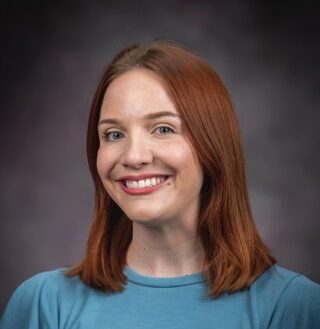
Dr. Ramona Weber is a postdoctoral fellow in Dr. Graeme Koelwyn’s lab. Her project, co-funded by the HLI, studies exercise therapy as a way to reverse sepsis-induced immune suppression.
Full biographies of award recipients and funded projects can be found on the MSHR BC website:
https://healthresearchbc.ca/awardrecipient/2025-research-trainee-award-recipients/
Doctors often use a routine lipid panel – a blood test that measures levels of fat in the blood – to assess cardiovascular risk. Cardiovascular disease remains the leading cause of death worldwide. Among the many numbers a lipid panel reports, one is often missing despite its strong ability to predict heart disease. That number is Lipoprotein(a) or Lp(a). Though elevated Lp(a) levels are found in around 1.6 billion people globally, it is almost never measured.
A recent review paper published in the European Journal of Preventive Cardiology, led by physician-scientists at the Centre for Heart Lung Innovation (HLI) and McGill University, argues that it is time to change how and when we test for this overlooked risk factor.
The review, written by Drs. Iulia Iatan and Gordon Francis, with co-authors Drs. Liam Brunham and John Mancini, presents a comprehensive case for testing Lp(a). It draws on clinical guidelines, epidemiologic and genetic data, and public health principles.




As Dr. Gordon Francis notes, “It is now recommended that Lp(a) be measured at the same time as the first cholesterol profile.”
How Lp(a) is unique and why it matters
Lp(a) is not your typical cholesterol biomarker. Unlike low-density lipoprotein (LDL) cholesterol – the “bad” cholesterol that raises heart disease risk and can change with diet or lifestyle changes – Lp(a) levels are genetically determined and remain stable throughout life.
Years of large-scale and genetic studies have shown that Lp(a) is an independent, causal risk factor for atherosclerotic cardiovascular disease and aortic stenosis. In other words, Lp(a) is associated with the development of both blocked arteries and narrowing of the heart valves. The higher someone’s Lp(a) is, the greater their risk is. Importantly, this risk is present even in individuals with low LDL cholesterol levels.
“The risk of atherosclerotic cardiovascular disease with markedly elevated Lp(a) is equal to that of untreated familial hypercholesterolemia.” – Dr. Gordon Francis
The authors cite a major study of 5.5 million U.S patients, where less than 1% had their Lp(a) levels measured. Yet, it is estimated that 1 in 5 people worldwide have elevated levels (Lp(a) > 125 nmol/L), making it as common as high blood pressure or smoking in some populations.
The evidence is clear, but underused
When evaluating Lp(a) against classical and modern population-level screening principles, the authors’ conclusion was clear: Lp(a) screening checks nearly every box. It is common, easy to measure with a reliable and simple blood test, provides actionable information to guide patient care, and is cost-effective.
In British Columbia, a one-time Lp(a) test costs just $29.61. As the authors note, “the value of knowing the result of the test is likely to be higher than the cost of the test.” That value includes helping doctors better predict who is most at risk so that they can intervene earlier and potentially prevent cardiovascular events and reduce associated healthcare costs.
While there is not yet an approved treatment that directly lowers Lp(a), several therapies are in late-stage clinical trials and expected to report outcomes within the next year. Still, the authors emphasize that Lp(a) testing can already be useful in informing care. Knowing a patient’s Lp(a) level can help clinicians decide whether to lower other modifiable risk factors more intensively, such as lowering LDL cholesterol levels or prioritizing imaging.
Test results can also prompt screening of family members, especially when there is history of premature cardiovascular disease or inherited high cholesterol (familial hypercholesterolemia).
According to Dr. Iulia Iatan, “When we identify a patient with elevated Lp(a), it’s not just about that individual – it’s an opportunity to screen family members and intervene earlier.”
As Dr. Francis notes, “When elevated Lp(a) is found, it is recommended to review the family history for premature cardiovascular events, try to reduce all other risk factors like smoking or elevated blood pressure, possibly perform a blood vessel imaging study like a carotid ultrasound or coronary calcium score, and consider initiating statin therapy to mitigate the risk of the high Lp(a).”
Global guidelines already recommend Lp(a) screening
International guidelines are beginning to reflect the growing consensus on the importance of Lp(a). Canadian and European lipid guidelines, as well as the American National Lipid Association, now recommend one-time Lp(a) testing for all adults, preferably when they get their first lipid panel.
Yet, as the paper highlights, “this recommendation has not been incorporated into a formalized screening programme in any health jurisdiction to our knowledge.” The authors suggest that Lp(a) testing could serve as a catalyst to reevaluate how lipids are screened at the population level.
Awareness isn’t enough
The authors conclude with a clear call to action: “The time has come to qualify Lp(a) as a routine screening test for cardiovascular risk assessment based on these cornerstone criteria.”
This paper reflects the ongoing leadership of physician-scientists at HLI, who continue to shape the future of proactive preventive medicine. Their efforts are helping change how inherited cardiovascular risks are detected, managed, and ultimately prevented in routine care.
Take a look at the full open-access article here:
Iulia Iatan, Marlys L Koschinsky, Logan Trenaman, Wei Zhang, George Thanassoulis, Liam R Brunham, G B John Mancini, Gordon A Francis, Rationale for the routine screening of Lipoprotein(a) in cardiovascular risk assessment, European Journal of Preventive Cardiology, 2025;, zwaf342, https://doi.org/10.1093/eurjpc/zwaf342
When I got my acceptance letter to the University of British Columbia, my entire world changed. It wasn’t just an invitation to pursue my PhD – it felt like recognition. One of the top universities in the world had seen me.
I knew it was going to be difficult, but had not yet grasped the gravity of academic demands, the echoing halls of imposter syndrome and the constant effort and quiet exhaustion required to establish myself in a scholarly space.
Growing up in Jamaica, research was never on my radar. Any career days held between primary and secondary school usually highlighted doctors, lawyers, teachers, policemen, soldiers and the odd veterinarian. It wasn’t until university, when I faced rejection from Medical School, and had to hastily find a new major, that I discovered pharmacology.
The privilege of pursuing tertiary education was the result of my parents balancing demanding work and family responsibilities. My parents’ perseverance in supporting my educational journey is especially remarkable given the structural and historical barriers shaped by colonial legacies in Jamaica, which limited and continue to limit access to fundamental human rights – including education.
As this new world of research unfolded during my undergraduate studies in Jamaica, I developed an insatiable curiosity for drug research. I found especially concerning the fact that many drugs are not tested in diverse populations, based on the fallacy that female hormones and ethnic differences introduce undesirable complexities. It is typically only after a drug hits the market that other side effects or adverse events are picked up through pharmacovigilance. For example, the anti-hypertensive medication captopril was discovered to be less effective or cause serious adverse events like angioedema in people of African ancestry – a population with one of the highest rates of hypertension in the world. I have even known a woman whose blood pressure dropped so low while taking this medication that she almost fainted while driving. The practice of exclusion is not just theoretical, it endangers lives.
With each new example I encountered, I realized the scientific rigour I once admired was deeply rooted in systemic exclusions. At the same time, I observed a paradox: communities need to trust that therapies are safe, but fear mistreatment should they participate in research, a fear that has emerged from a history of unethical experimentation. This tension was the genesis of my passion for equitable health research.
Alongside conventional medicine, I took a course in ethnopharmacology, the cultural use of plants or other natural products as medicine. Something bloomed when I learned that nature could heal us, if we listened. Natural products could also cause harm, so balancing safety and effectiveness became the underpinning of my master’s project. Using an in vivo asthma model, I investigated whether the crude extracts of Plectranthus amboinicus, a fragrant herb, could relax a precontracted guinea pig trachea. The hexane extract showed desirable bioactivity, while the ethyl acetate and methanol extracts did not, highlighting how solvent choice affects phytochemical composition and bioactivity. While I no longer work in ethnopharmacology, its principles remain in my mind, and the knowledge that there is value in both traditional and conventional medicine.
Moving to British Columbia was chaotic and exhilarating. I was brimming with zeal, as most of us are when we start out. We want to change the world, until we realize we only have 4 -6 years to do so (the typical length of a PhD). My supervisor brushed the stars from my eyes and helped me focus on a project that would get me those three coveted letters. Initially, my work focused on asthma mechanisms, partly inspired by my own experience with refractory asthma.
While I was busy studying airway inflammation and immune responses, life outside school kept moving. I carried the burdens of multiple family losses in rapid and seemingly unending succession, in a time when flying home (due to the COVID pandemic) was out of the question. As this grief shadowed me, adapting felt impossible. I was already grappling with the stark under-representation of researchers from the African diaspora in the department, adjusting to a research environment far more resourced than the one I came from — where ordering reagents could take up to two years — and consolidating my own cultural perspectives with the Canadian academic framework.
Amidst this, my initial research trajectory came to an end. While working in the asthma lab taught me much, I was struggling to connect with the research direction and thus made the difficult decision to switch topics. At the time, it tasted like utter failure, but in hindsight, it was clarity, a moment to recentre my wellbeing and values, and remind myself of my ‘why’. Resilience does not come from easy times. It is forged in moments when familiarity is out of reach. Through the grief, setbacks and redirection, I found my way back to my first passion, equity — now extended to equity, diversity and inclusion (EDI). I did not realize how much I valued equity, until I almost lost sight of it.
In my time here, I have felt the inexperienced hands of Canadian healthcare; dismissals rooted in cultural ignorance, the ache of invisibility in academic spaces and misdirected good intentions. Yet alongside these shadows, I have experienced many, if not more, illuminating moments of hope. I have been met with compassionate kindness from those who came before me, mutual support and guidance rooted in community, and they have sharpened my resolve.
With this renewed perspective, my project now focuses on health data equity. Canada has not been immune to the culture of exclusion, and many marginalized populations experience worsened health outcomes as a result. The intersection of health equity and big data presents both risks and opportunities; without careful attention, existing disparities may be exacerbated, but with conscious, ethical use of data analytics and artificial intelligence, we can meaningfully improve health equity. When I look at my work now, it is not just about data or disease. It is about people. May we all consider those we cannot see and think of ways to make health research more reflective, more human.
This journey has reminded me that research is not separate from self. Our work is shaped by who we are, the lives we have lived, and the depths of our imagination. As I move forward, I carry not only the knowledge that sparks my curiosity, but the people, communities and courage we share. It is my hope that this work becomes a part of a larger shift in our research culture, that equity, diversity and inclusion are not just check-boxes, but also our way of life.
